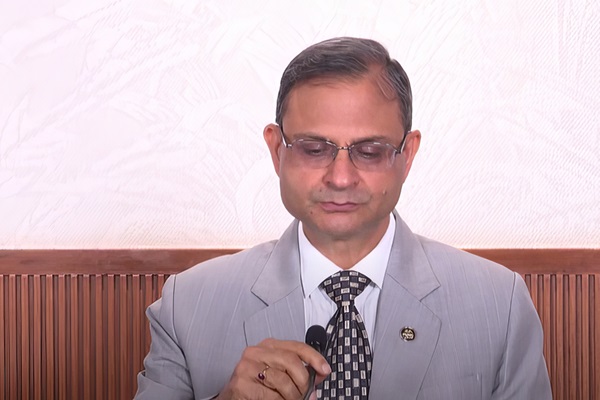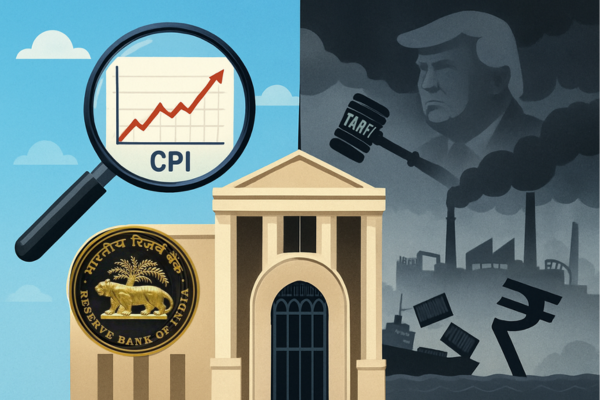.png)
RBI Must Cut Rates Now, Not Wait Until December
With inflation collapsing, growth momentum set to fade, and the rupee a shock absorber, the RBI must cut rates in October, not wait till December.

Madhavi Arora is Chief Economist at Emkay Global Financial Services, where she focuses on macroeconomic research and asset allocation strategies.
September 30, 2025 at 5:17 AM IST
Consensus holds that the Reserve Bank of India will stand pat in October, guided by its June and August policy signals. This view is misplaced. The macro environment has shifted decisively, and the case for a further 25-basis-point cut this month is overwhelming. Delaying until December risks wasting valuable time. The central bank should front-load easing, open the door for more, and avoid falling behind the curve.
The first and most compelling reason is inflation.
Since April, the RBI has been forced into a series of downward revisions to its 2025–26 forecast as quarterly prints undershot. By August, its projection had fallen to 3.1%. Excluding the impact of GST cuts, headline inflation is likely closer to 2.6% this year and could touch 2.1% once the tax pass-through is factored in.
Core inflation is moderating too, with 2026–27 tracking near 4%. Against this backdrop, the real policy rate risks drifting above 3%, far tighter than needed in an economy still absorbing shocks. Anchoring policy on one-year-ahead inflation estimates of nearly 5% is a misjudgement when the disinflation trend is so firmly entrenched today.
Growth is the second reason.
The headline GDP print above 7% in the first quarter looked impressive but was flattered by technical distortions. The deflator was unusually soft, exports to the US were front-loaded, and government spending bulked up the data.
A repeat is possible in the second quarter, with deflator adjustments again flattering the numbers. But the second half will slow sharply once the tariff impact feeds through.
Nominal GDP in 2025–26 is likely to print below 8%. That is a serious concern, because all fiscal and corporate ratios — debt to GDP, deficits, earnings and even credit growth — hinge on nominal rather than real growth. Without timely monetary support, the economy could slip into a weaker trajectory just as income strains spread beyond cities to semi-urban markets.
The third argument is the rupee.
Sceptics contend that cutting rates will further narrow the interest rate differential with the US, depress risk premia, and weaken an already fragile currency. This view underestimates the benefits of adjustment. India has already lost competitiveness to its Asian peers, and tariffs on goods and services only exacerbate the imbalance. Some depreciation would act as a natural stabiliser, helping offset the tariff shock and containing the current account deficit. The rupee should be seen as part of the solution, not a reason for paralysis.
The risk to this view is that the Monetary Policy Committee chooses caution, assigning weight to December as the optimal moment to assess the effects of tariffs, GST pass-through, and the impact of earlier cuts. Yet the lesson from June is unambiguous: when the macro reset is evident, the RBI must act early rather than late. October offers an opportunity to align guidance with reality. The central bank should take it.
Also read:
RBI Should Stay on Hold in October to Preserve Stability
Monetary Policy Should Look Beyond Repo Rate Cut
India’s Wage Malaise Leaves RBI Little Room to Hide



